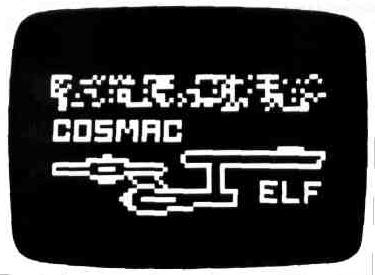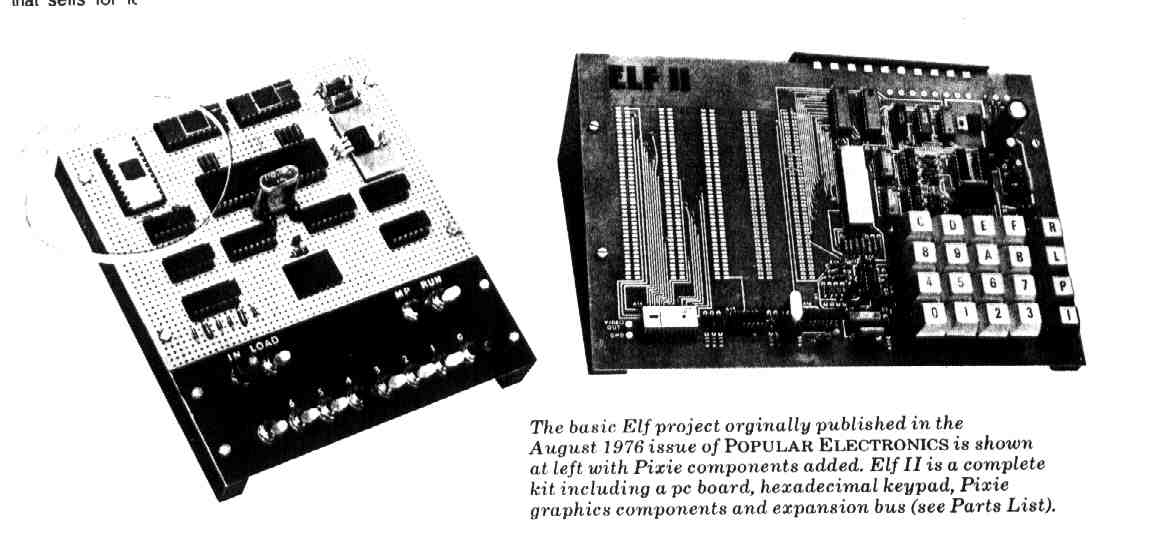
PE TESTED
BREAKTHROUGH PROJECT!
BY JOSEPH A. WEISBECKER
PART IV:
Build the PIXIE Graphic Display

If you own an Elf microcomputer (see POPULAR ELECTRONICS August 1976) or are planning to build one soon, the addition of a single IC and a handful of support components, and a change in the crystal frequency, can give you Pixie graphics. The entire graphics system is built into the new CDP 1861 LSI chip that sells for less than $20 from RCA parts distributors. (A complete kit is available; see Parts List.) The two other IC's in the optional add-on system are for a crystal oscillator that allows the graphics IC to generate the correct TV horizontal and vertical sync pulses.
The photo at the top of this page illustrates what can be done with the original 256 bytes of memory in the Elf when the Pixie graphics system is added. In this article, we will show you how to install and program the Pixie system to produce this type of graphics.
Some Details. The unique Pixie graphics system employs the direct memory access (DMA) capability built into the 1802 microprocessor in the Elf [42]
